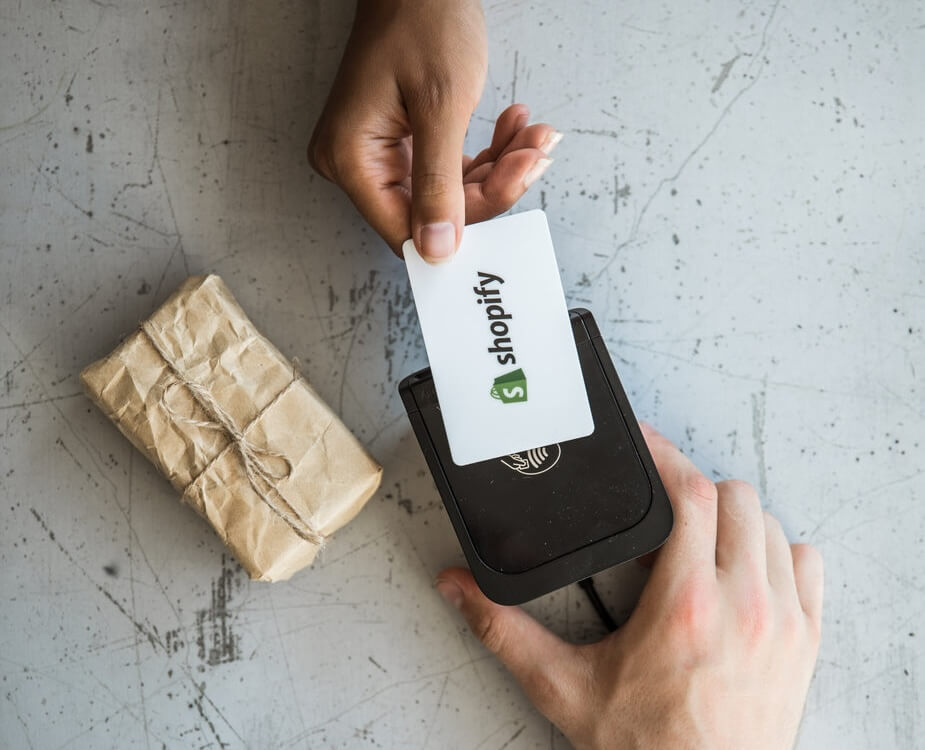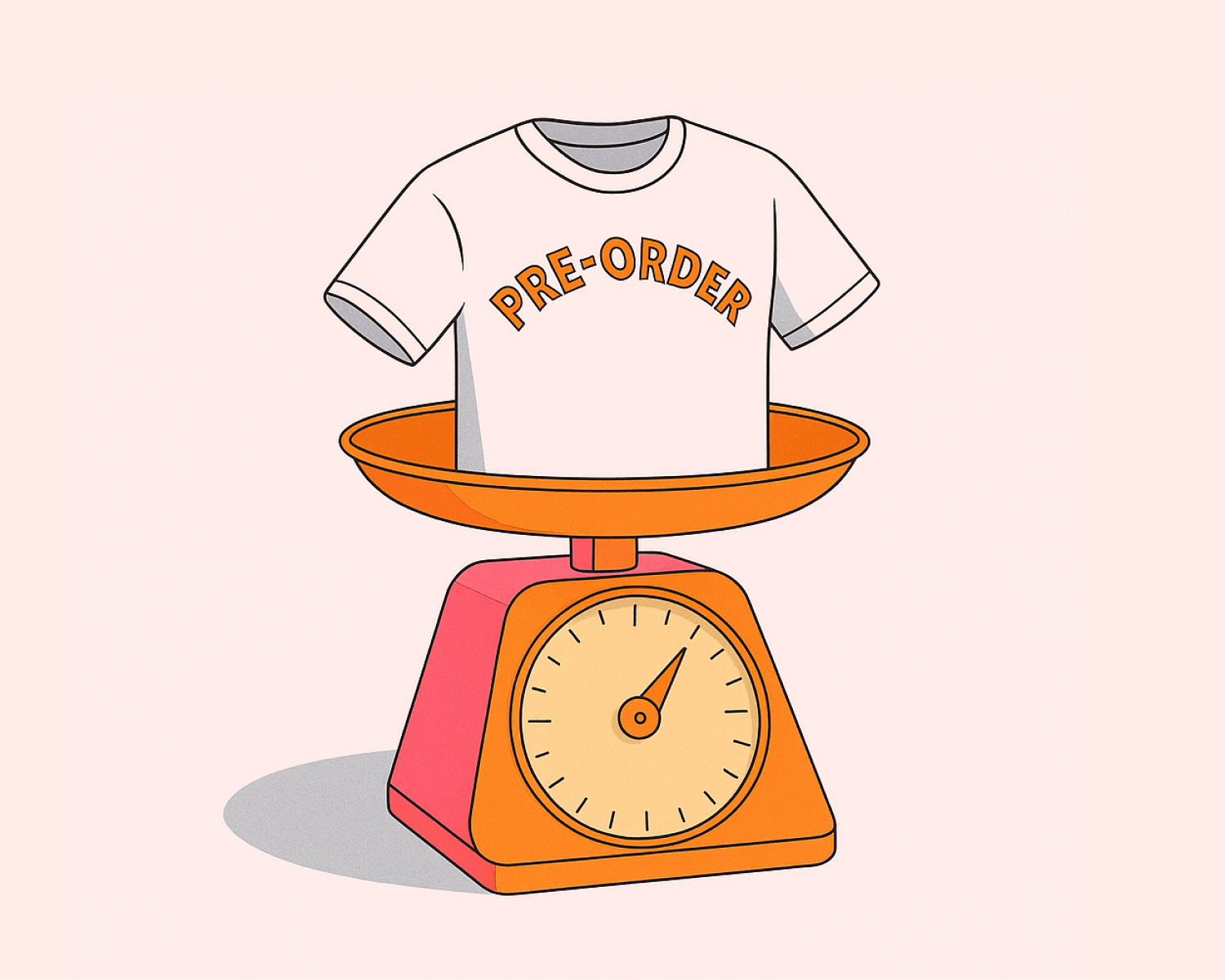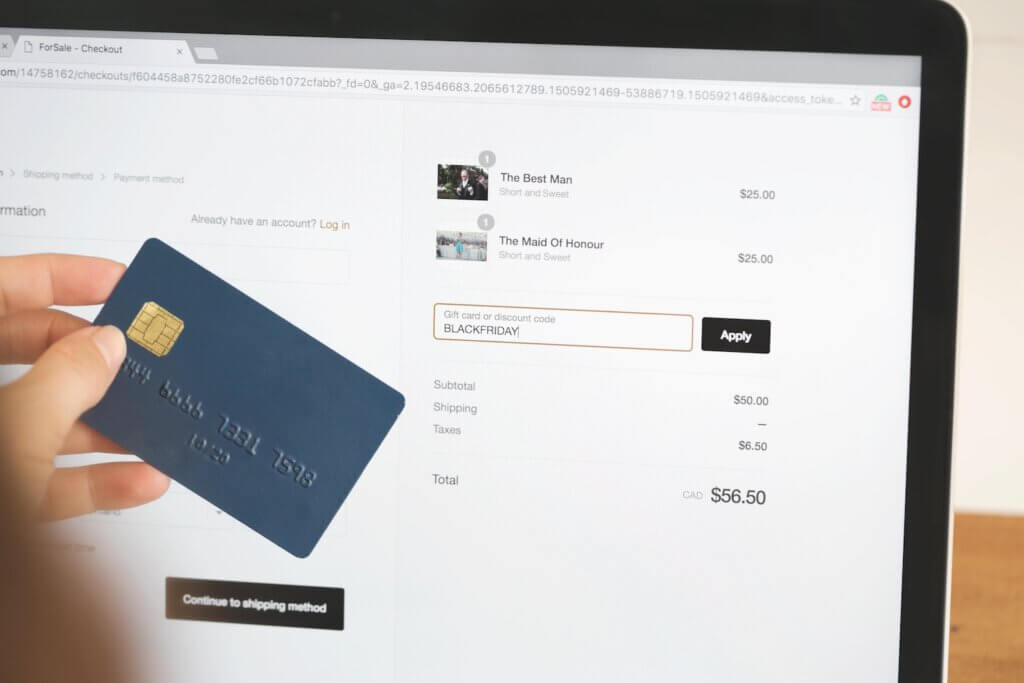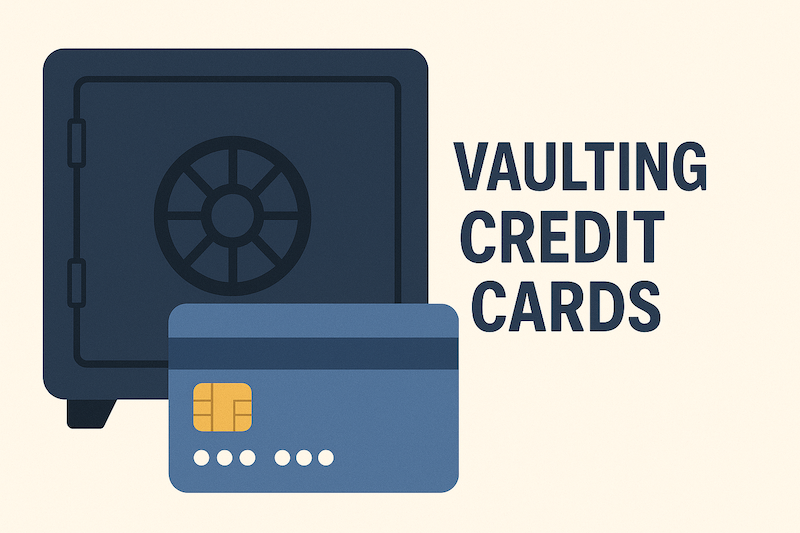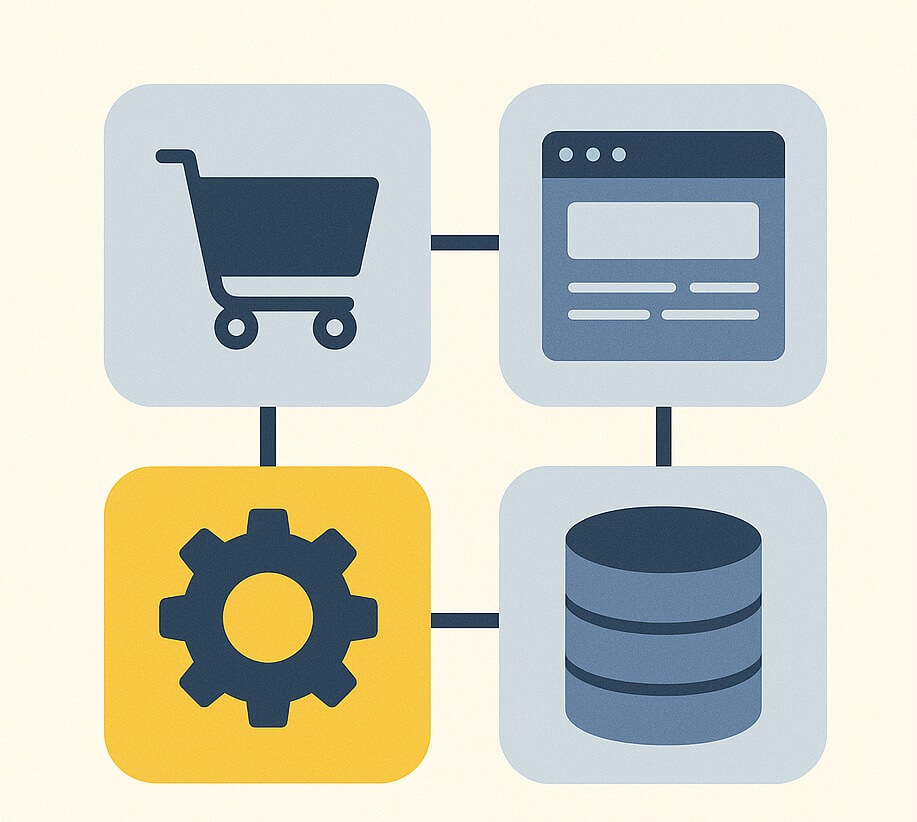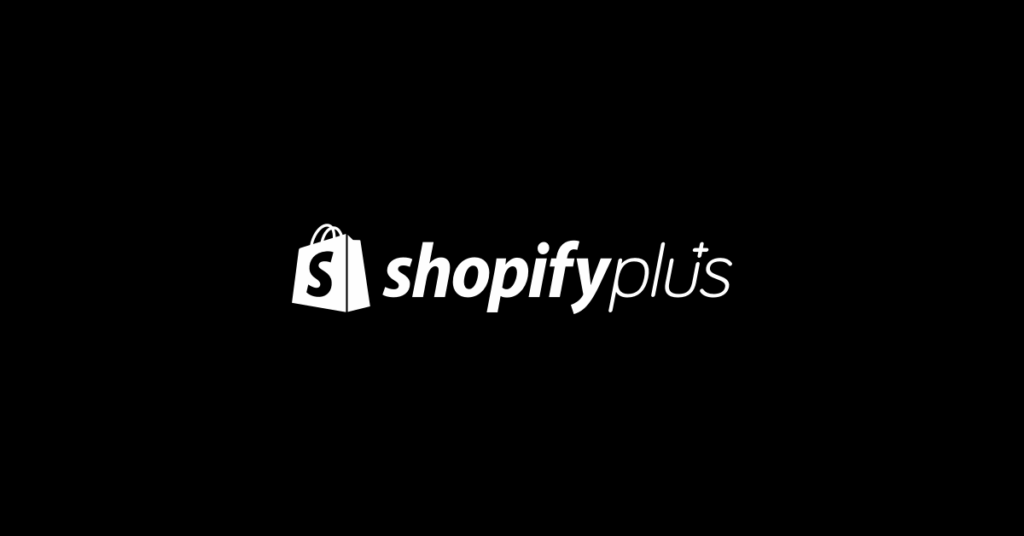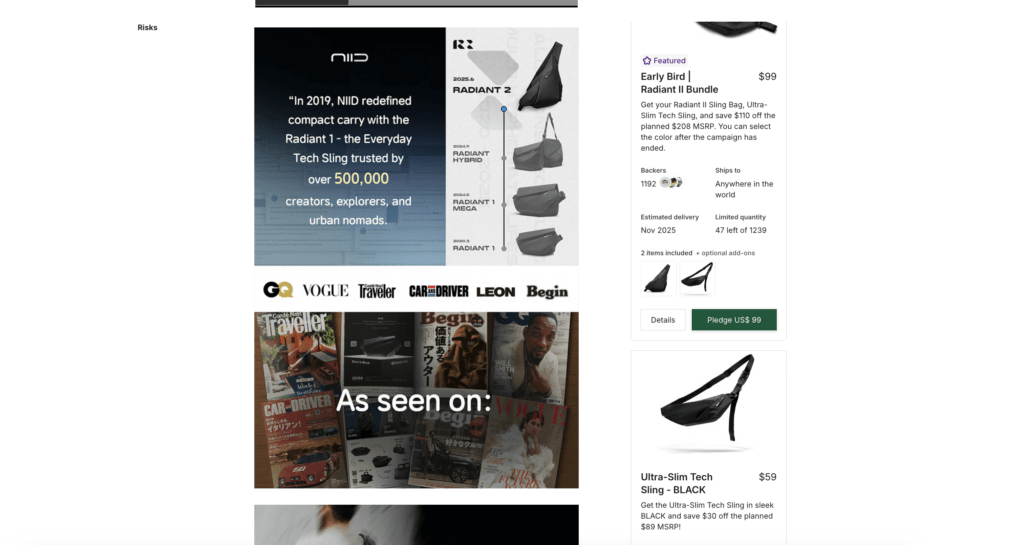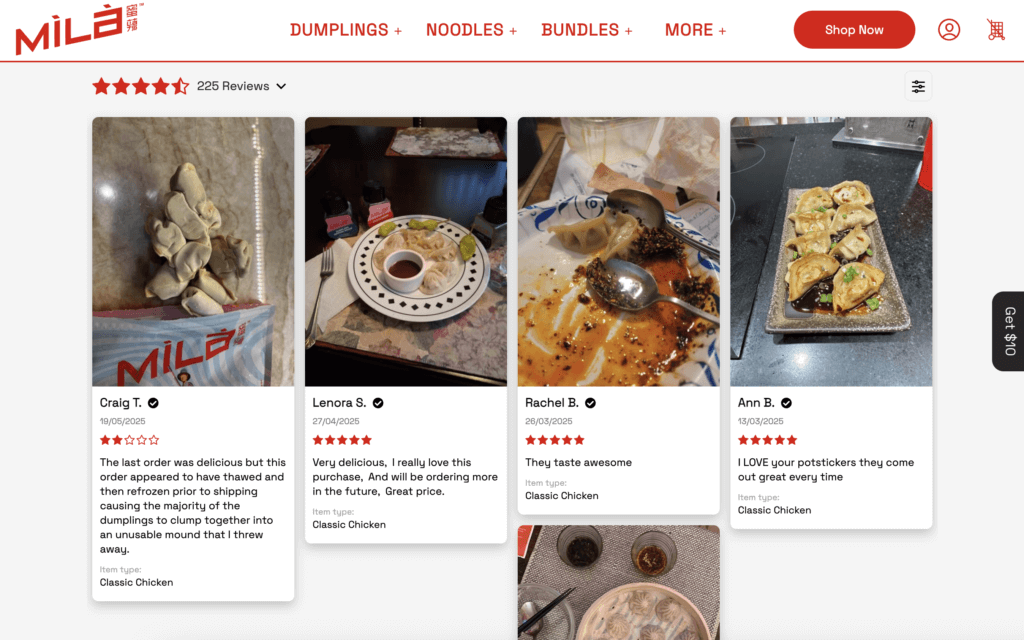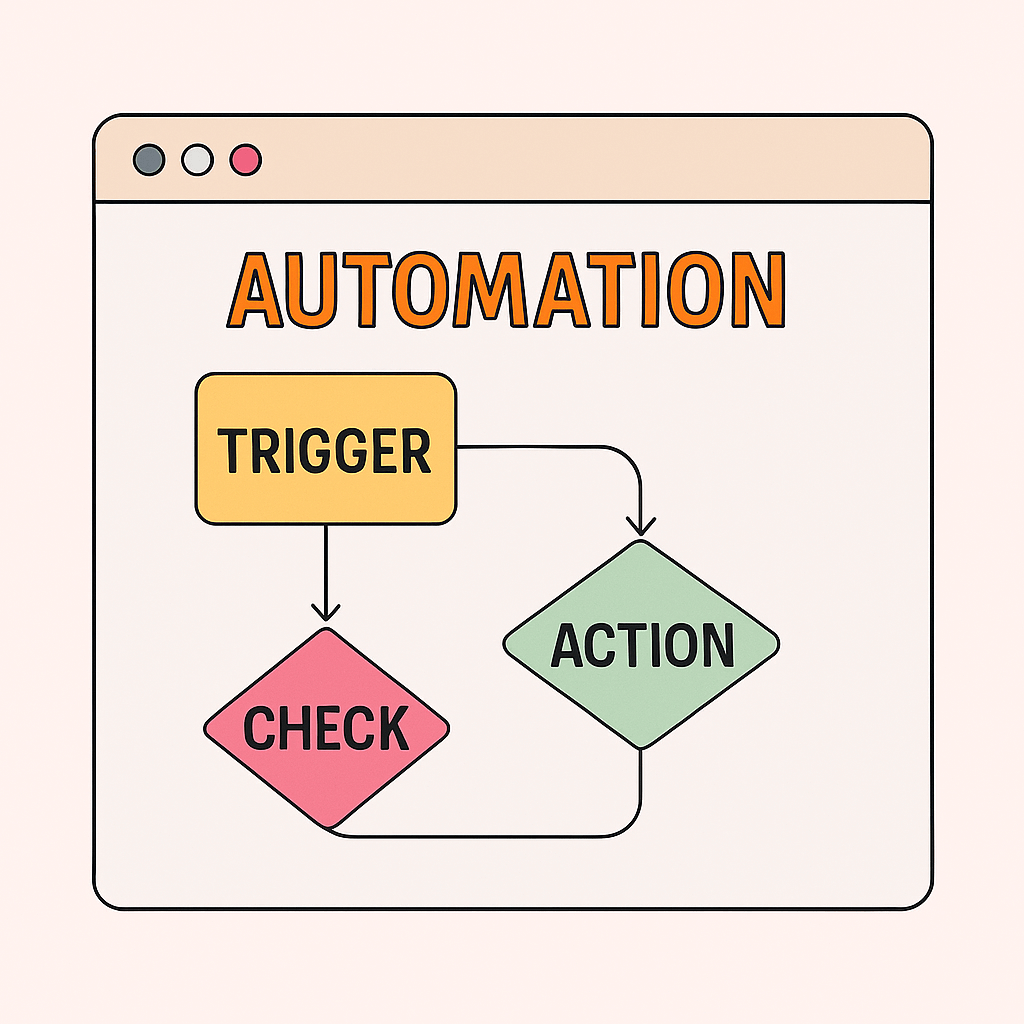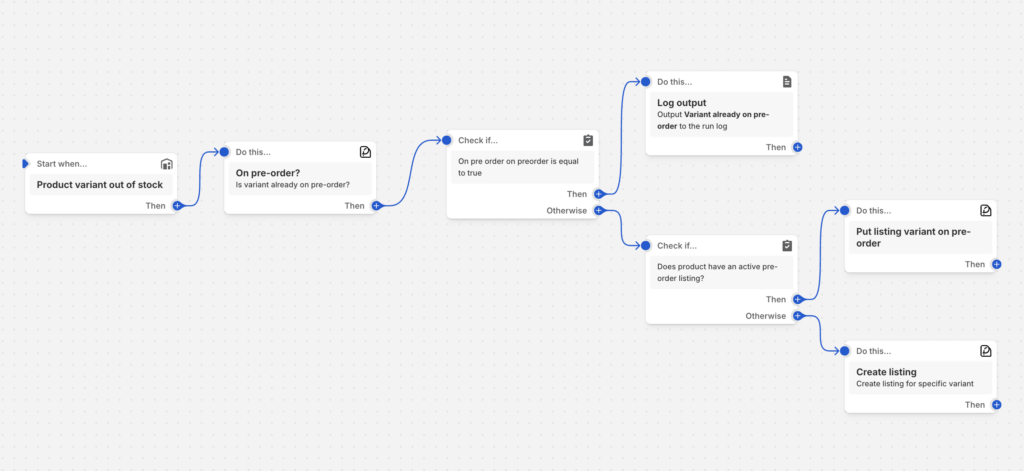Just want to generate a pre-order policy? Click here.
Pre-orders vary dramatically between stores. Some charge upfront and ship within 30 days. Others vault customer cards but don’t charge until fulfillment, sometimes 120+ days later. Some take deposits, others require full payment. Lead times range from weeks to months. Your pre-order policy is how you communicate these differences to customers, and without one, you risk disputes, payment failures and refund headaches that could have been avoided with transparent terms.
Setting up Pre-orders on Shopify opens opportunities to capture demand early, validate new products and improve cash flow. But taking payment before you ship comes with legal obligations and customer expectations you need to manage carefully. A well-written Shopify pre-order policy protects your store while building trust with customers who are committing to products that aren’t yet in their hands.
This guide walks you through everything you need to create a compliant, customer-friendly pre-order policy for your Shopify store. You’ll learn about FTC requirements and guidelines, what to include based on your payment model, and get free copy-paste templates tailored to charge-upfront, charge-later and deposit pre-orders.
Why Your Shopify Store Needs a Pre-order Policy
Legal Requirements You Can’t Ignore

The FTC Mail, Internet, or Telephone Order Merchandise Rule sets clear requirements for Pre-orders. (Learn more from the FTC) If you advertise a shipping timeframe, you must have a reasonable basis to ship within that window. If you don’t specify a date, you’re required to ship within 30 days of receiving payment. Other countries have similar requirements, although Europe can be stricter with payment and stock certainty.
When you can’t meet the promised timeline, you must notify customers promptly and explain their right to cancel or receive a full refund. If the customer cancels due to delay, you have seven business days to process the refund. These are federal requirements that generally apply to US-based ecommerce stores taking Pre-orders, though specific circumstances may vary.
Beyond federal rules, some states have additional disclosure requirements. Your Shopify pre-order policy should clearly state when payment occurs, when shipping happens and what customer rights exist if delays occur.
Customer Trust and Transparency
Clear policies reduce disputes and set realistic expectations. When customers understand exactly when they’ll be charged, when their order will ship and how to cancel if needed, you reduce support tickets and payment failures.
The average pre-order cancellation rate sits at 5.4% across the data we’ve collected. A transparent policy that explains your process upfront helps you maintain that baseline rather than seeing cancellations spike due to confusion or unmet expectations.
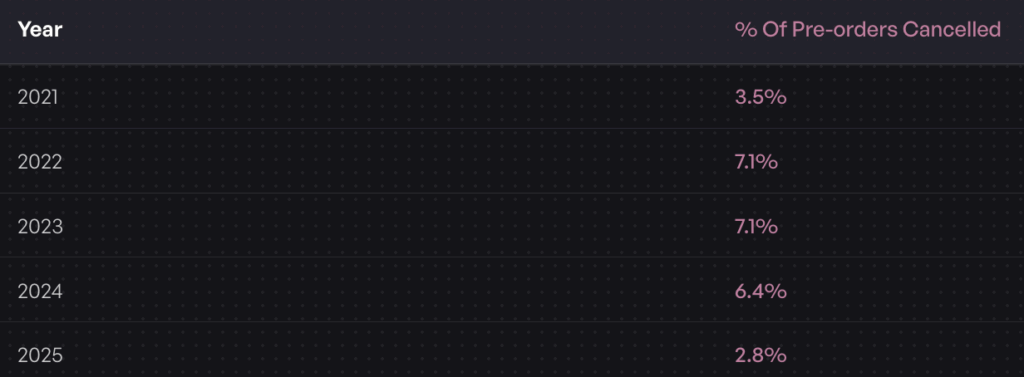
Pre-orders require more customer patience than standard purchases. Your policy is where you earn that patience by being upfront about timelines, payment terms and what happens if things change.
Platform-Specific Requirements
Shopify has technical requirements that affect your pre-order policy language. Pre-orders currently work only with Shopify Payments or PayPal Express. Customers can’t use accelerated checkouts like Shop Pay, Apple Pay or Google Pay, nor local payment methods like Klarna or Sofort for pre-order purchases.

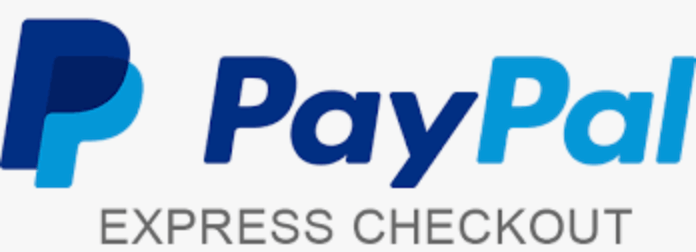
If you’re using charge-later or deposit pre-orders, you’ll need Shopify Payments enabled and a Shopify pre-order app that supports vaulted card payments. These technical requirements should be disclosed in your policy so customers understand any checkout limitations.
Your policy also needs to address Shopify’s authorization period if you’re charging upfront and holding fulfillment. Payment authorizations typically expire after seven days, which matters for stores with longer lead times using charge-upfront models.
What to Include in Your Shopify Pre-order Policy
Essential Policy Components
1. Estimated Shipping and Delivery Dates
You must provide realistic estimated delivery dates and have a reasonable basis for those dates. Avoid vague language like “ships soon” in favor of specific windows: “Estimated to ship by March 15, 2025” or “Ships within 30-60 days of order placement.”
Data from over one million Pre-orders shows that 28.1% of pre-orders have fulfillment windows between 121-150 days, the most common lead time range. If your product has a longer timeline, communicate that clearly and explain why (custom manufacturing, overseas production, etc.).
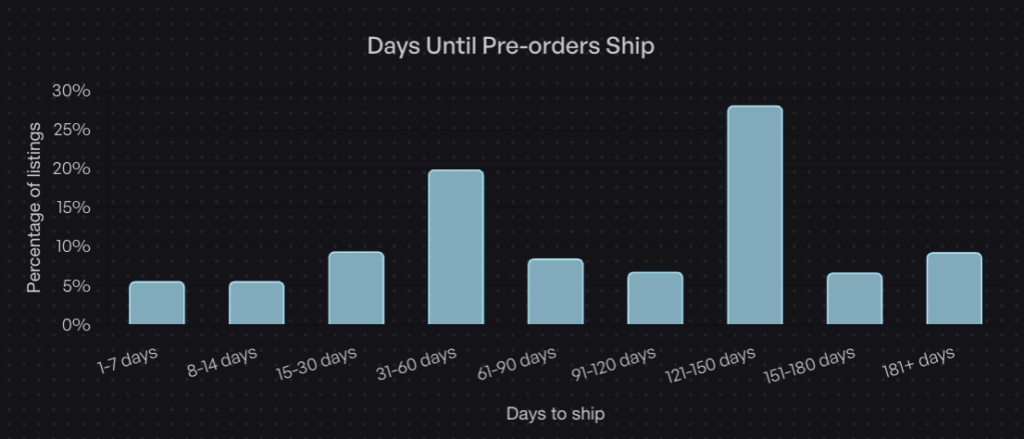
Include language about what happens if the estimated date changes. Specify how you’ll notify customers and what options they have if the new timeline doesn’t work for them.
2. Payment Terms and Timing
This is where your policy must be crystal clear about when and how customers will be charged. The language varies significantly based on whether you’re using charge-upfront, charge-later or deposit models.
For charge-upfront pre-orders, state that payment is collected immediately at checkout. For charge-later pre-orders (our most popular pre-order type), explain that you’ll vault the customer’s payment method with your payment processor, but won’t capture funds until you’re ready to ship. Include information about card vaulting and that the customer’s payment method will be securely stored.
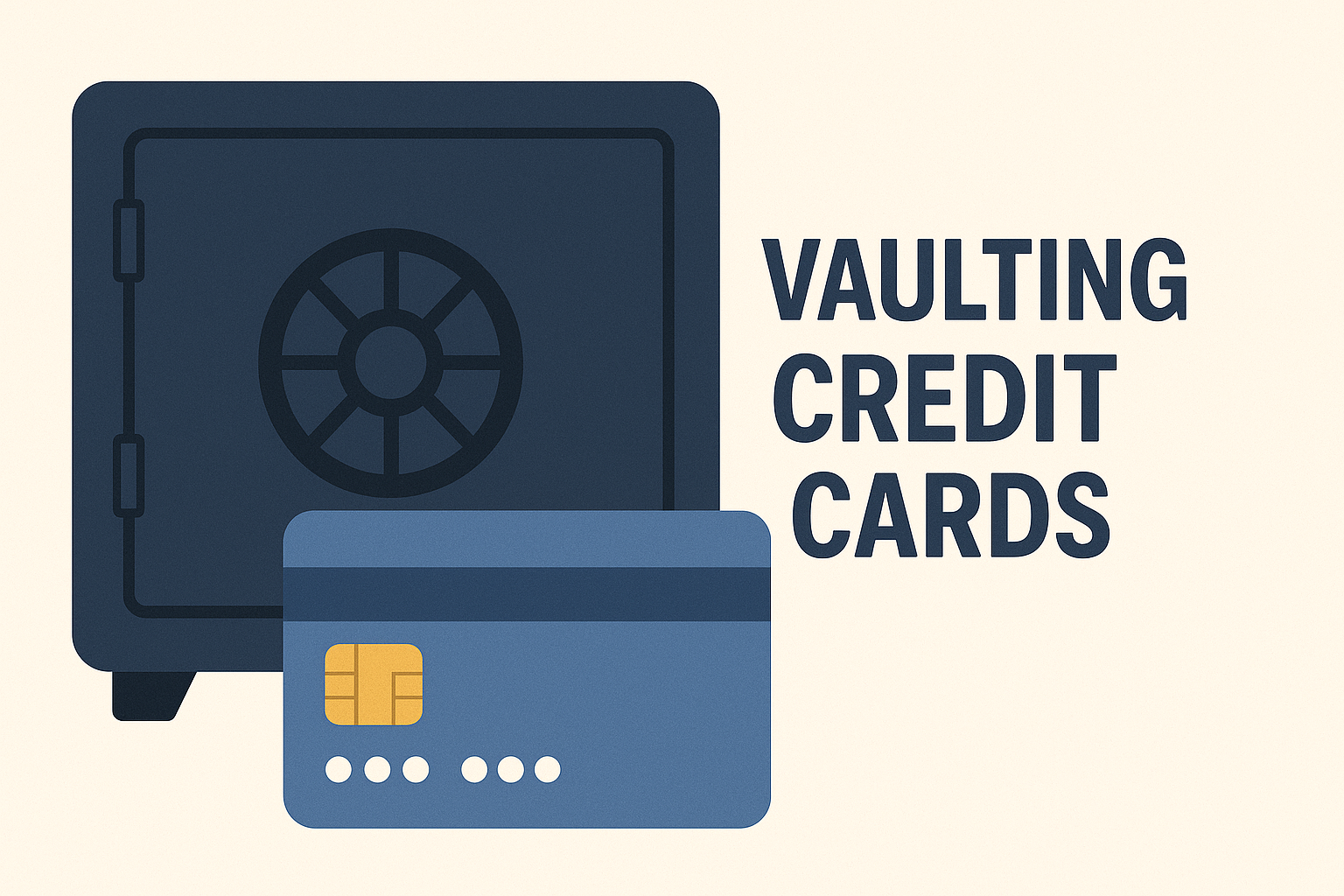
For deposit-based pre-orders, specify the percentage or amount taken upfront, when the balance will be charged and how customers will be notified before the balance charge occurs.
Include language about payment failures and what happens if a deferred charge or balance payment doesn’t go through. This protects you operationally and sets expectations with customers.
3. Refund and Cancellation Rights
Your policy must explain customer rights to cancel before shipping and how to receive refunds. Under FTC rules, if you can’t ship within the promised timeframe and the customer chooses to cancel, you must issue a full refund within seven business days. It’s also a good idea to mention if customers should cancel via a customer portal or your email support.
Specify whether customers can cancel after you’ve charged them but before you’ve shipped. Many stores allow cancellations up until the point of dispatch, which builds goodwill and reduces friction.
For deposit-based pre-orders, clarify whether deposits are refundable and under what circumstances. Some stores make deposits non-refundable after a certain point to manage production commitments, while others offer full refunds until shipping.
Address partial refunds for situations where you can only fulfill part of an order or need to substitute products.
4. Shipping and Fulfillment
Explain what happens once your pre-order stock arrives. Will orders ship immediately or will there be additional processing time? If you’re fulfilling pre-orders in the order they were placed, state that clearly.
If you allow mixed carts (pre-order items with buy-now items), explain how shipping works. Will you split the shipment and send in-stock items first, or hold everything until the pre-order is ready? Note that 62.1% of stores prohibit mixed carts to keep operations simple, but if you allow them, your policy needs to address the logistics.
Include information about shipping costs, international orders and any fulfillment holds that prevent accidental early shipping.

5. Delay and Communication Procedures
Supply chain disruptions happen. Your policy should outline what you’ll do if shipping dates change and how you’ll communicate updates to customers.
Specify how customers will be notified (email is standard), how much advance notice you’ll provide and what options customers have if they don’t agree to the new timeline. Include language about significant delays (typically four weeks or more beyond the original estimate) and customer rights to cancel with full refunds in those situations.
Consider adding a force majeure clause that addresses circumstances beyond your control, manufacturing delays, shipping disruptions or supply chain issues. This sets realistic expectations while maintaining your commitment to transparency.
6. Customer Rights and Contact Information
Make it easy for customers to reach you with questions about their pre-order. Include your support email, phone number if applicable and typical response times.
For US customers, reference their rights under the FTC Mail Order Rule. For EU customers, disclose the 14-day cooling-off period and their right to cancel for any reason within that window. For Australian customers, reference Australian Consumer Law protections.
Provide clear instructions on how to cancel a pre-order, request a refund or update payment information if needed.
Region-Specific Considerations
US Market
Your policy must comply with the FTC Mail, Internet, or Telephone Order Merchandise Rule. This means clear shipping timelines (or the default 30-day window), prompt delay notifications and seven-day refund processing when customers cancel due to delays.
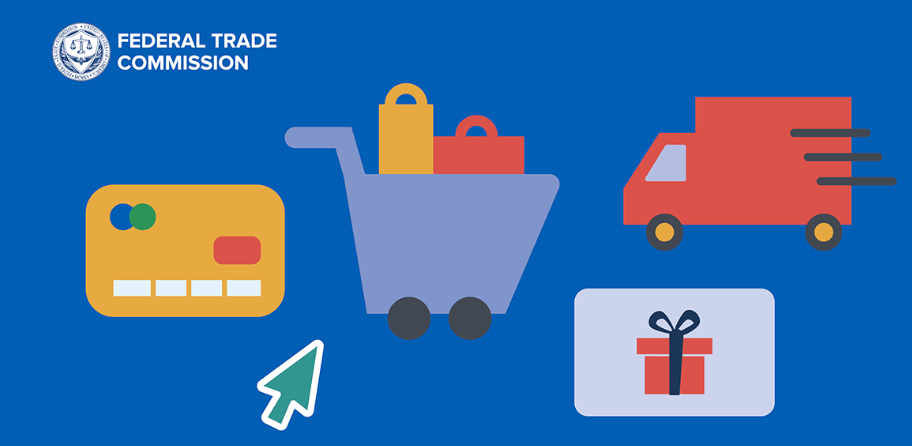
Some states require additional disclosures. California, for example, has specific requirements around subscription-like charges. If your pre-order involves multiple payments over time, check state-level regulations.
EU Market
EU customers have a 14-day cooling-off period under the Consumer Rights Directive. They can cancel for any reason within 14 days of receiving the product and receive a full refund. Your policy must explicitly state this right.
As of December 2024, the EU’s General Product Safety Regulation (GPSR) requires you to appoint an EU-based Authorized Representative and provide comprehensive product safety information. If you’re selling pre-orders to EU customers, your policy should reference compliance with GPSR.
You must proactively inform EU customers of any changes to expected delivery dates and clearly explain their rights if delays occur. The communication requirements are more formal than in the US.
Other Markets
Australian Consumer Law provides strong protections for customers, including guarantees about product quality and delivery timelines. Your policy should acknowledge these rights without trying to limit them.
Canadian requirements are similar to US rules but reference the Competition Act and provincial consumer protection laws. If you ship to Canada, note any differences in processing times or returns.
Free Shopify Pre-order Policy Generator
Use this generator to create a pre-order policy template based on your store:
Generate a customized pre-order policy for your store.
How to Display Your Pre-order Policy on Shopify
Create a Dedicated Policy Page
Add your pre-order policy as a dedicated page in your Shopify admin:
- Go to Online Store > Pages in your Shopify admin
- Click Add Page
- Title it “Pre-order Policy” or “Pre-order Terms”
- Paste your policy content into the page editor
- Set the visibility to visible and save
Alternatively, add it to your existing policies:
- Go to Settings > Policies in Shopify admin
- Scroll to the bottom and look for custom policy options
- Select the pre-existing “Purchase options cancellation policy” policy
- Paste your template and customize
- Save changes
Link From Product Pages
Make your pre-order policy easy to find from product pages where Pre-orders are available:
- Add a line in your product description: “This is a pre-order item. Please review our Pre-order Policy before purchasing.”
- Optionally, you can also add terms and conditions at checkout requiring customers to acknowledge pre-order terms. Optin in Shopify’s “Online store” -> click 3 dots -> “Edit default theme content” -> search for “pre-order” -> edit the “Purchase options agreement label” field -> click “Save”
Email Communication Touchpoints
Your policy should be reflected in automated emails:
Order Confirmation Email
Include a reminder that this is a pre-order with a link to full terms:
“Thank you for your pre-order! Your payment [will be charged when ready to ship / has been collected]. Review our [Pre-order Policy] for details on estimated shipping dates and cancellation rights.”
Upcoming charge notification email (for charge-later and deposit balance)
Optionally sent 24 hours before charging:
“Your pre-order for [PRODUCT] is almost ready! We’ll charge your payment method on [DATE]. If you need to update payment information or cancel, please do so by [DEADLINE]. Full details in our [Pre-order Policy].”
Best Practices for Pre-order Customer Communication
Setting Expectations Early
Clear communication starts on the product page. Your pre-order button, product description and estimated delivery date should all align with your policy.
Examples of effective product page copy:
- “Pre-order: Ships by March 15, 2025”
- “Pre-order: Estimated delivery 90-120 days from order date”
- “Pre-order: Limited production run, payment collected when ready to ship”
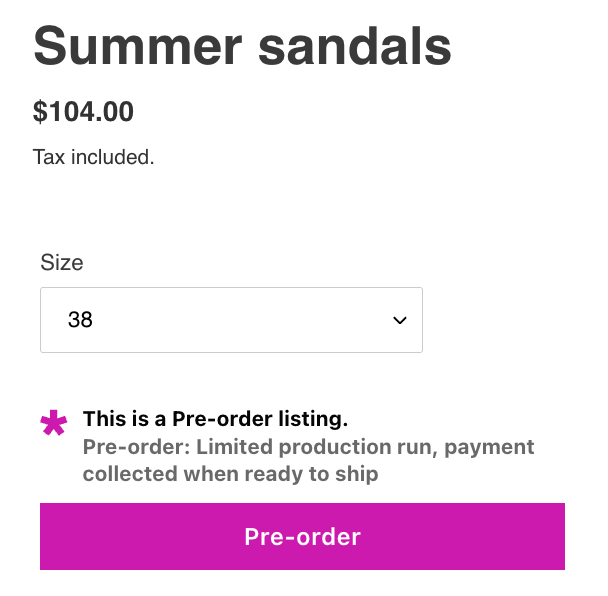
Customize your add-to-cart button text to say “Pre-order Now” instead of “Add to Cart” so customers understand what they’re buying. Most Shopify pre-order apps, including PreProduct, let you customize front-end wording across the storefront to match your brand and set clear expectations.
Proactive Updates During Lead Time
Don’t wait for customers to ask for updates. Communication reduces anxiety, support tickets and cancellations.
Send emails when something changes, plus the initial order confirmation:
- Order confirmation: Immediate (standard)
- Upcoming charge notification: 24 hours before charging (for charge-later/deposit)
- Shipping update: When item ships with tracking
- Delay notification: Immediately when you learn of delays or timeline changes
Let customers know they can check their customer portal anytime for up-to-date information on their order status, estimated delivery dates and payment schedules. This reduces the need for frequent email updates while keeping customers informed.
PreProduct offers customizable email templates and customer portals where pre-order customers can check their order status, estimated delivery dates and payment schedules anytime without contacting support.
Managing Delays and Changes
Delays happen. How you handle them determines whether customers stay committed or cancel.
When you learn of a delay:
- Calculate the new estimated timeline with buffer
- Draft clear notification email explaining what happened and new date
- Explain customer options (keep order with new date or cancel for refund)
- Set a deadline for customers to respond if they want to cancel
- Send the notification immediately, don’t wait
Email template for delay notifications:
“Subject: Update on Your Pre-order: New Estimated Ship Date
Hi [NAME],
We’re reaching out about your pre-order for [PRODUCT] (Order #[NUMBER]).
Due to [BRIEF REASON: manufacturing delays / shipping disruptions / supplier issues], the estimated ship date has changed from [ORIGINAL DATE] to [NEW DATE].
We understand this is disappointing. Here are your options:
Option 1: Keep your order with the new ship date of [NEW DATE]
No action needed. We’ll proceed with your order and notify you when it ships.
Option 2: Cancel for a full refund
Email us at [SUPPORT EMAIL] by [DEADLINE DATE] to cancel. [Refunds are processed within 7 business days / No payment will be collected if you cancel].
We sincerely apologize for this delay and appreciate your patience. If you have questions, please reply to this email or contact [SUPPORT EMAIL].
Thank you,
[YOUR STORE NAME]”
Common Pre-order Policy Mistakes to Avoid
Being Vague About Shipping Times
“Ships soon” or “available later this year” probably doesn’t meet your local legal requirements and frustrate customers. If you genuinely don’t know when a product will ship, it’s better to use a date range with clear caveats: “Estimated to ship between April and June 2025, subject to manufacturing timeline” is better than vague promises.
If production schedule is uncertain, use charge-later or deposit models rather than collecting full payment upfront. This reduces your refund risk and keeps customers committed without their money tied up indefinitely.
Not Disclosing Payment Timing
Customers need to know exactly when they’ll be charged. “Payment will be processed” is too vague. Your policy should state:
- Charge-upfront: “Your card is charged immediately when you place your order”
- Charge-later: “Your payment method will be vaulted with our processor now but won’t be charged until we’re ready to ship, approximately [TIMEFRAME] from now”
- Deposit: “You’ll pay [AMOUNT/PERCENTAGE] now and the remaining [AMOUNT/PERCENTAGE] when we’re ready to ship, approximately [TIMEFRAME] from now”
Also disclose if there are limitations on payment methods (no Shop Pay, Apple Pay, etc.) so customers aren’t surprised at checkout.
Ignoring Regional Requirements
If you sell internationally, your policy can’t be US-only. EU customers have 14-day cooling-off periods. Australian customers have strong consumer guarantees. Canadian provinces have their own consumer protection laws.
Include a section that acknowledges regional rights:
“For EU customers: You have a 14-day righxt to cancel under the Consumer Rights Directive. See our full returns policy for details.”
“For Australian customers: Nothing in these terms limits your rights under Australian Consumer Law.”
Don’t try to write separate policies for each region unless you have a legal team. A single comprehensive policy that acknowledges major regional differences is sufficient for most stores.
Incomplete Refund Policies
Your refund section must address:
- Timeline for processing refunds (FTC requires seven business days)
- What triggers a refund (cancellation before ship, failure to meet timeline, etc.)
- How refunds are issued (back to original payment method)
- What happens to deposits if order is cancelled
- Partial refunds if you can only fulfill part of an order
Don’t leave customers guessing about whether they can get their money back and how long it takes.
No Delay Contingency Plans
Your policy should have clear language about what happens when shipping dates slip. Include:
- How you’ll notify customers of delays
- How much advance notice you’ll provide
- Definition of “significant delay” (typically four weeks or more)
- Customer options when delays occur
- How long customers have to decide whether to keep or cancel
Consider adding a force majeure clause:
“If delays occur due to circumstances beyond our reasonable control (natural disasters, pandemics, shipping disruptions, trade restrictions, etc.), we will notify you as soon as possible and provide updated timelines. You will have the option to cancel for a full refund if the delay exceeds [NUMBER] weeks.”
Technical Requirements for Shopify Pre-orders
Payment Gateway Setup
To offer deferred-charge Pre-orders on Shopify, you must use either Shopify Payments or PayPal automatic payments. Other payment gateways don’t support the vaulting and capture workflows needed for charge-later pre-orders. Most payment gateways support charge-upfront pre-orders.
For charge-later and deposit Pre-orders specifically, you need:
- Shopify Payments enabled
- A pre-order app that supports vaulted card payments (storing payment details to charge later)
- Note: Charge-later pre-orders use card vaulting, not authorization holds, so there’s no expiration window to manage
PreProduct and similar apps handle the technical complexity of vaulting cards and managing deferred charges so you don’t have to build custom checkout flows. The app securely stores customer payment details with Shopify Payments, PayPal or Stripe and charges them when you trigger the fulfillment release. For deposit-based Pre-orders, check out Shopify deposit payments for detailed setup guidance.
Inventory and Fulfillment Settings
Enable the “Continue selling when out of stock” for pre-order products so customers can purchase even when inventory is at zero. Most pre-order apps toggle this setting automatically when you create a listing.
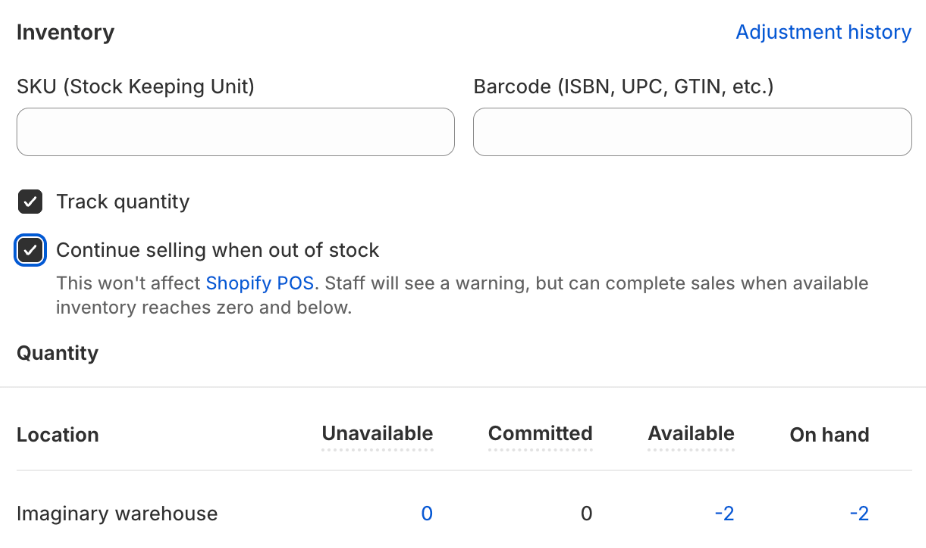
For Shopify stores, make sure that your pre-order app implements fulfillment holds to prevent pre-orders from flowing automatically to your 3PL or warehouse management system. When you’re ready to fulfill, you can release them, either manually or via automation.
For BigCommerce and WooCommerce stores using PreProduct, orders are kept entirely separate from your platform admin until you release fulfillment. This prevents premature shipping and keeps pre-orders out of your normal fulfillment workflows.
Track pre-order inventory separately from regular inventory if you’re managing both simultaneously. Use separate SKUs or variants to prevent overselling and maintain accurate reporting.
Pre-order App Integration
Shopify’s native pre-order functionality is limited. To offer charge-later, deposit or multi-step payment plans, you’ll need a dedicated pre-order app.
Look for apps that offer:
- Multiple payment models (charge-upfront, charge-later, deposit)
- Customizable front-end wording for product pages and checkout
- Fulfillment holds or order management
- Automated email notifications for charges and shipping updates
- Customer portals where customers can view order status and payment schedules
- Integration with Shopify Flow for automation
PreProduct offers all of these features plus deep Shopify Flow integration with 15 custom Flow actions and 16 triggers. This lets you automate pre-order listing creation, charge triggering and fulfillment releases based on inventory changes and other conditions in your Shopify store.
Real-World Pre-order Policy Examples
Example 1: Short Lead Time (30-60 Days)
A fashion brand is restocking a popular jacket. Lead time is 45 days from manufacturer. They use a charge-upfront model because the timeline is short and predictable.
Their policy focuses on:
- Clear estimated ship date: “Ships by April 15, 2025”
- Immediate payment collection
- Simple cancellation: “Cancel any time before shipment for full refund”
- Standard return policy applies after delivery
This straightforward approach works because the short timeline minimizes complexity. Customers know exactly when to expect their order and when they’ll be charged.
Example 2: Long Lead Time (120+ Days)
A custom furniture maker takes pre-orders for made-to-order pieces. Production takes 120-150 days. They use a deposit model: 30% upfront, balance charged when ready to ship.
Their policy emphasizes:
- Detailed production timeline explanation
- Deposit amount and balance payment schedule
- Mid-production email update at 60-day mark
- Clear communication about delays (custom manufacturing is unpredictable)
- Deposit refund policy: Full refund before balance charge, non-refundable after balance charged
The longer timeline requires more detailed communication and a payment structure that commits customers without tying up all their money for months. This matches the 28.1% of pre-orders with 121-150 day windows, the most common extended lead time range.
Example 3: Mixed Cart Approach
An outdoor gear store allows customers to buy in-stock items with pre-order items. They default to shipping everything together but offer split shipment for an additional fee.
Their policy clarifies:
- Default: All items ship together when pre-order is ready
- Split shipment available for $15 additional
- In-stock items charged immediately
- pre-order items (charge-later model) charged when ready to ship
- Separate return windows for items that ship separately
This approach increases average order value but requires clear policy language to prevent customer confusion about why in-stock items haven’t shipped yet.
Note that 62.1% of stores using PreProduct prohibit mixed carts specifically to avoid this operational complexity. Whether you allow mixed carts depends on your fulfillment setup and customer service capacity.
Conclusion
A well-written Shopify pre-order policy protects your store legally while building customer trust. The key is transparency: clear payment terms, realistic shipping estimates and straightforward cancellation rights reduce disputes and support tickets.
Remember these essentials:
- Include all required components: shipping timelines, payment terms, refund procedures, delay protocols and customer contact information
- Comply with local laws and regulations (30-day default, delay notifications, seven-day refunds) and regional requirements (EU 14-day cooling-off, GPSR compliance, etc.)
- Tailor your policy to your payment model (charge-upfront needs different language than charge-later or deposit)
- Display policy clearly on product pages, checkout and confirmation emails
- Communicate proactively throughout the pre-order lifecycle with scheduled updates and immediate delay notifications
Use the free templates in this guide as starting points. Customize them with your specific terms, timelines and contact information. Consider having legal counsel review your policy, especially if you’re taking deposits or operating across multiple regions.
Ready to set up pre-orders with built-in policy compliance? PreProduct helps Shopify stores manage pre-orders from listing to fulfillment, with customizable policy language, automated customer communications and fulfillment controls that keep operations clean. Start taking pre-orders today and capture demand before products hit your warehouse.

